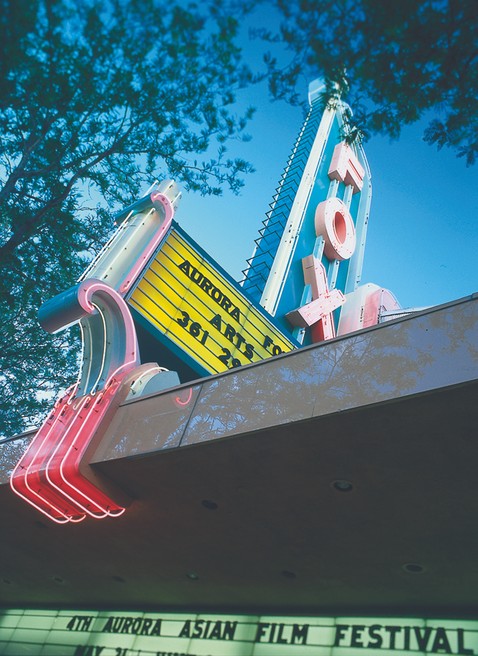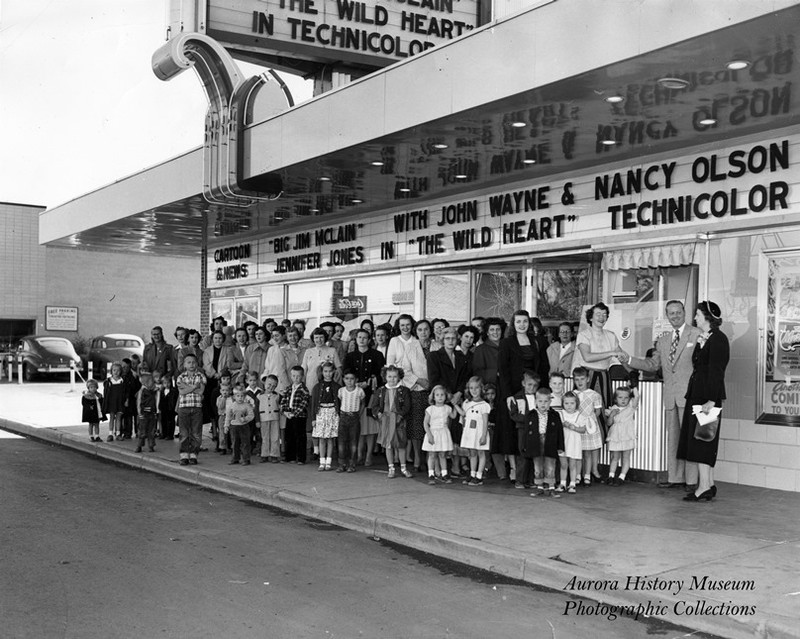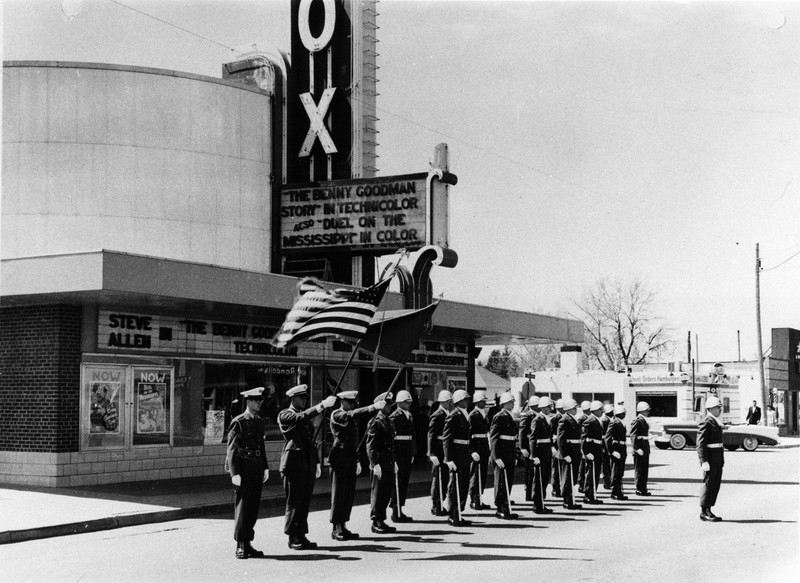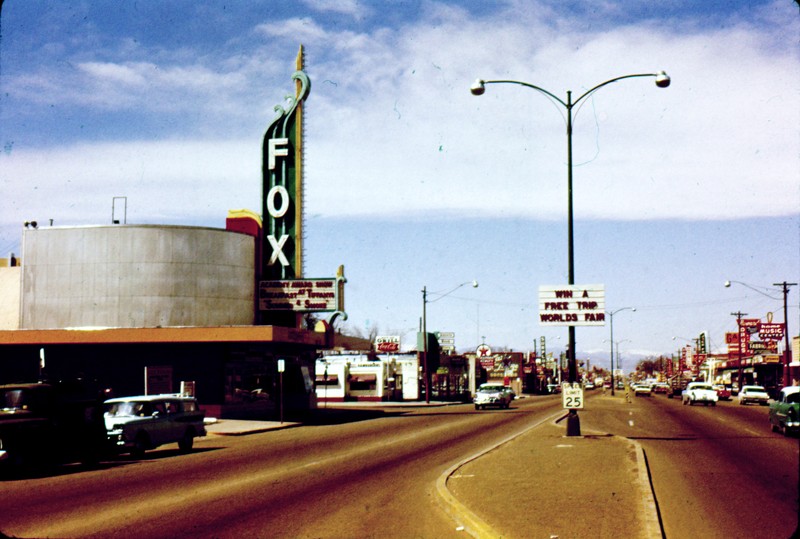Aurora Fox Arts Center
Introduction
Text-to-speech Audio
Images
Aurora Fox Arts Center

The Aurora Fox, 1952.

The Aurora Fox, 1956.

The Aurora Fox, 1962.

Backstory and Context
Text-to-speech Audio
The residents of Aurora wished for a theater of their own. Yet, the priorities of the Great Depression and Second World War made that reality nothing more than a dream. That changed in 1946 when the Fox Inter-Mountain Amusement Corporation announced plans for a movie theater in Aurora. Costing $100,000, the “theater of tomorrow," as it was advertised, combined the futuristic design of Art Modern with the military Quonset hut.
Prefabrication and the Quonset Hut
Prefabricated structures have roots in the mail order catalogues popular in the later 19th and early 20th centuries. By that time, modernist designers, like Frank Lloyd Wright, began to think of prefabrication as a mechanism of affordable housing. Following the United States entry into World War II prefabrication methods were quickly adopted by the military for their low cost and portable nature. As the nation geared up for war, a team of U.S. Navy designers developed a simple, versatile prefabricated structure known as the Quonset hut. The simple design and prefabricated components required no skilled labor to construct, resulting in some 150,000 Quonset huts being deployed around the world, serving a number of uses. When the conflict ended in 1945, surplus Quonset huts were sold to civilians, finding new homes on ranches, farms, and in residential neighborhoods. Prefabrication became a staple in the post war years, providing homes to returning soldiers and their families in new suburban developments.
Cite This Entry
Jacob Giretti McDonald on behalf of Aurora History Museum & Historic Sites. "Aurora Fox Arts Center." Clio: Your Guide to History. July 17, 2020. Accessed March 31, 2025. https://theclio.com/tour/1412/7
Sources
Steele, Laurence W., and Kenneth Barber. “Aurora Fox Arts Center, Aurora Landmark No. 5, Nomination Form,” City of Aurora, https://www.auroragov.org/things_to_do/aurora_history_museum/historic_sites/landmark_process
McAlester, Virginia Savage. A Field Guide to American Houses: The Definitive Guide to Identifying and Understanding America’s Domestic Architecture. . Edition 2nd. New York. Alfred A. Knopf, 2013.
Aurora History Museum & Historic Sites
Aurora History Museum & Historic Sites
Aurora History Museum & Historic Sites
Aurora History Museum & Historic Sites

